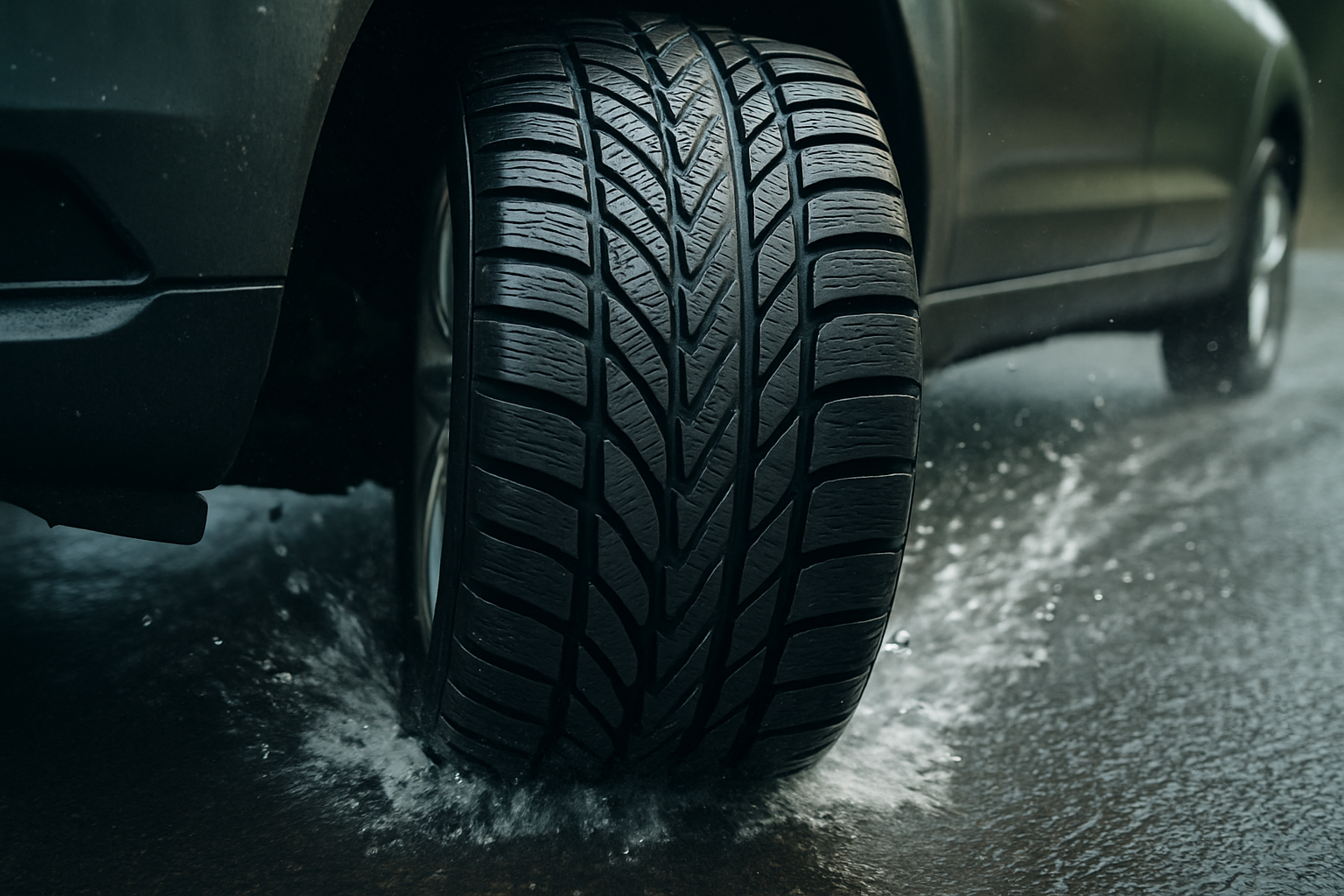Hydroplaning Prevention: The Cutting Edge of Tire Technology
Imagine cruising down a rain-soaked highway, your tires suddenly losing their grip on the road. This heart-stopping scenario, known as hydroplaning, has long been a challenge for drivers and automotive engineers alike. Today, we delve into the latest advancements in tire technology aimed at conquering this perilous phenomenon, exploring how innovative design and materials are reshaping our relationship with wet roads.

Nanomaterial Revolution in Tire Compounds
At the forefront of hydroplaning prevention is the integration of nanomaterials into tire compounds. These microscopic particles, often composed of silica or carbon black, are engineered to enhance the tire’s ability to disperse water and maintain contact with the road surface. By altering the molecular structure of the rubber, nanomaterials create a more hydrophobic surface that actively repels water, significantly reducing the risk of hydroplaning even in severe weather conditions.
Dynamic Tread Patterns: Shape-Shifting Rubber
Imagine a tire that could alter its tread pattern in real-time, adapting to changing road conditions. This is no longer science fiction, thanks to the development of shape-memory polymers and adaptive tread designs. These innovative tires use embedded sensors to detect water on the road and activate a transformation in the tread pattern, creating deeper grooves and more efficient water channels on demand. As conditions improve, the tire reverts to its original form, optimizing performance across various driving scenarios.
Micro-Pump Technology: Active Water Displacement
One of the most exciting developments in hydroplaning prevention is the integration of micro-pump systems within tire structures. These tiny pumps, powered by the tire’s rotation, actively draw water away from the contact patch, creating a drier surface for the tire to grip. This technology not only improves safety in wet conditions but also enhances overall tire performance by reducing rolling resistance and improving fuel efficiency.
Biomimetic Design: Learning from Nature
Engineers are increasingly turning to nature for inspiration in tire design. Biomimetic tread patterns, inspired by the paw pads of animals that excel in wet environments, are showing remarkable promise in hydroplaning prevention. These designs often feature intricate microstructures that mimic the water-dispersing capabilities of certain plants and animals, allowing tires to maintain grip even in the most challenging conditions.
Intelligent Tire Systems: The Future of Road Safety
The integration of smart sensors and artificial intelligence into tire systems represents the next frontier in hydroplaning prevention. These intelligent tires can continuously monitor road conditions, tire pressure, and tread wear, providing real-time feedback to the vehicle’s control systems. By anticipating potential hydroplaning situations and adjusting vehicle dynamics accordingly, these systems offer an unprecedented level of safety and control.
Challenges and Future Prospects
While these advancements offer exciting possibilities for improving road safety, they also present challenges. The cost of implementing these technologies on a mass scale, ensuring long-term durability, and addressing potential environmental impacts are all factors that manufacturers must consider. Additionally, the integration of complex electronic systems into tires raises questions about maintenance, repair, and recycling processes.
Despite these challenges, the future of hydroplaning prevention looks promising. As these technologies mature and become more cost-effective, we can expect to see a significant reduction in weather-related accidents and a new era of confidence for drivers navigating wet roads.
The ongoing evolution of tire technology in the fight against hydroplaning showcases the automotive industry’s commitment to safety and innovation. From nanomaterials to biomimetic designs, these advancements not only promise safer journeys but also push the boundaries of what we thought possible in tire engineering. As we look to the future, it’s clear that the humble tire is poised to become one of the most sophisticated components of the modern vehicle, playing a crucial role in keeping us safe on the roads, come rain or shine.




